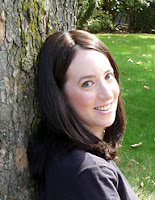Review: The Penguin Book of Witches
The Penguin Book of Witches edited by Katherine Howe, September 30, 2014. 320 pages. Published by Penguin Classics. Source: publisher.
Just in time for October, otherwise known as the perfect month for all things creepy, the release of The Penguin Book of Witches chronicling the witch trials throughout history from England to North America.
What's interesting about The Penguin Book of Witches is that the book is not entirely about the trials during the witch hunting times, but also about the mood and why things went as far as they did. I found it interesting to see a little more behind why the witch trials were more prevalent in some places over others and how some of the accusations were more due to a dislike of someone rather than them actually being a witch. It was intriguing to say the least to see how one could easily be caught up in the feuer for not falling in line either in thought or deed. So, yeah, that in itself is one way that this book is quite interesting because it looked beyond that of the actual trials and tried to see the bigger picture.
So, after finishing The Penguin Book of Witches, which was quite fascinating read, one does tend to feel like they have a better understanding of the times during which the witch trials took place. I enjoyed seeing the various accounts recanted in this book. Even though just reading about some of the girls who claimed to be bewitched tended to be quite maddening. Oh, the ways my minds spun when it comes to the questioning; things they should have done differently to assure that justice was dealt and not prejudice.
In the end, there were only really two things that I disliked about my time spent reading The Penguin Book of Witches. The first being that I was not all too keen on all the italics used throughout the book. While reading, I have a certain dislike for italics as for some reason it bothers me to no end, so, the abundant use of it forced me to read somewhat slower than usual.
My final reason for unhappiness is that upon finishing the book I felt doom and gloom and a certain lack of faith in humanity. All of which prompted me to finding some light and funny reads to chase this one. So, while this book can have you questioning the sanity of humanity, especially during rough times in history, it is quite the fascinating read as it sheds new light on some of the less than stellar happenings throughout history.
Final Verdict: The Penguin Book of Witches- I fresh look at the what spurred the the witch trials and those affected by it.
The Penguin Book of Witches earns
this book was received in exchange for an honest review
Chilling real-life accounts of witches, from medieval Europe through colonial AmericaFirst Sentence:
From a manual for witch hunters written by King James himself in 1597, to court documents from the Salem witch trials of 1692, to newspaper coverage of a woman stoned to death on the streets of Philadelphia while the Continental Congress met, The Penguin Book of Witches is a treasury of historical accounts of accused witches that sheds light on the reality behind the legends. Bringing to life stories like that of Eunice Cole, tried for attacking a teenage girl with a rock and buried with a stake through her heart; Jane Jacobs, a Bostonian so often accused of witchcraft that she took her tormentors to court on charges of slander; and Increase Mather, an exorcism-performing minister famed for his knowledge of witches, this volume provides a unique tour through the darkest history of English and North American witchcraft, never failing to horrify, intrigue, and delight.
When thinking about witches today, a certain standard image comes to mind: she is an old crone with a warty nose, a black pointed hat, raggedy clothes, and a black cat by her side.
Just in time for October, otherwise known as the perfect month for all things creepy, the release of The Penguin Book of Witches chronicling the witch trials throughout history from England to North America.
What's interesting about The Penguin Book of Witches is that the book is not entirely about the trials during the witch hunting times, but also about the mood and why things went as far as they did. I found it interesting to see a little more behind why the witch trials were more prevalent in some places over others and how some of the accusations were more due to a dislike of someone rather than them actually being a witch. It was intriguing to say the least to see how one could easily be caught up in the feuer for not falling in line either in thought or deed. So, yeah, that in itself is one way that this book is quite interesting because it looked beyond that of the actual trials and tried to see the bigger picture.
So, after finishing The Penguin Book of Witches, which was quite fascinating read, one does tend to feel like they have a better understanding of the times during which the witch trials took place. I enjoyed seeing the various accounts recanted in this book. Even though just reading about some of the girls who claimed to be bewitched tended to be quite maddening. Oh, the ways my minds spun when it comes to the questioning; things they should have done differently to assure that justice was dealt and not prejudice.
In the end, there were only really two things that I disliked about my time spent reading The Penguin Book of Witches. The first being that I was not all too keen on all the italics used throughout the book. While reading, I have a certain dislike for italics as for some reason it bothers me to no end, so, the abundant use of it forced me to read somewhat slower than usual.
My final reason for unhappiness is that upon finishing the book I felt doom and gloom and a certain lack of faith in humanity. All of which prompted me to finding some light and funny reads to chase this one. So, while this book can have you questioning the sanity of humanity, especially during rough times in history, it is quite the fascinating read as it sheds new light on some of the less than stellar happenings throughout history.
Final Verdict: The Penguin Book of Witches- I fresh look at the what spurred the the witch trials and those affected by it.
The Penguin Book of Witches earns
this book was received in exchange for an honest review





Comments
Post a Comment
All comments are moderated! Let's keep it clean, y'all!